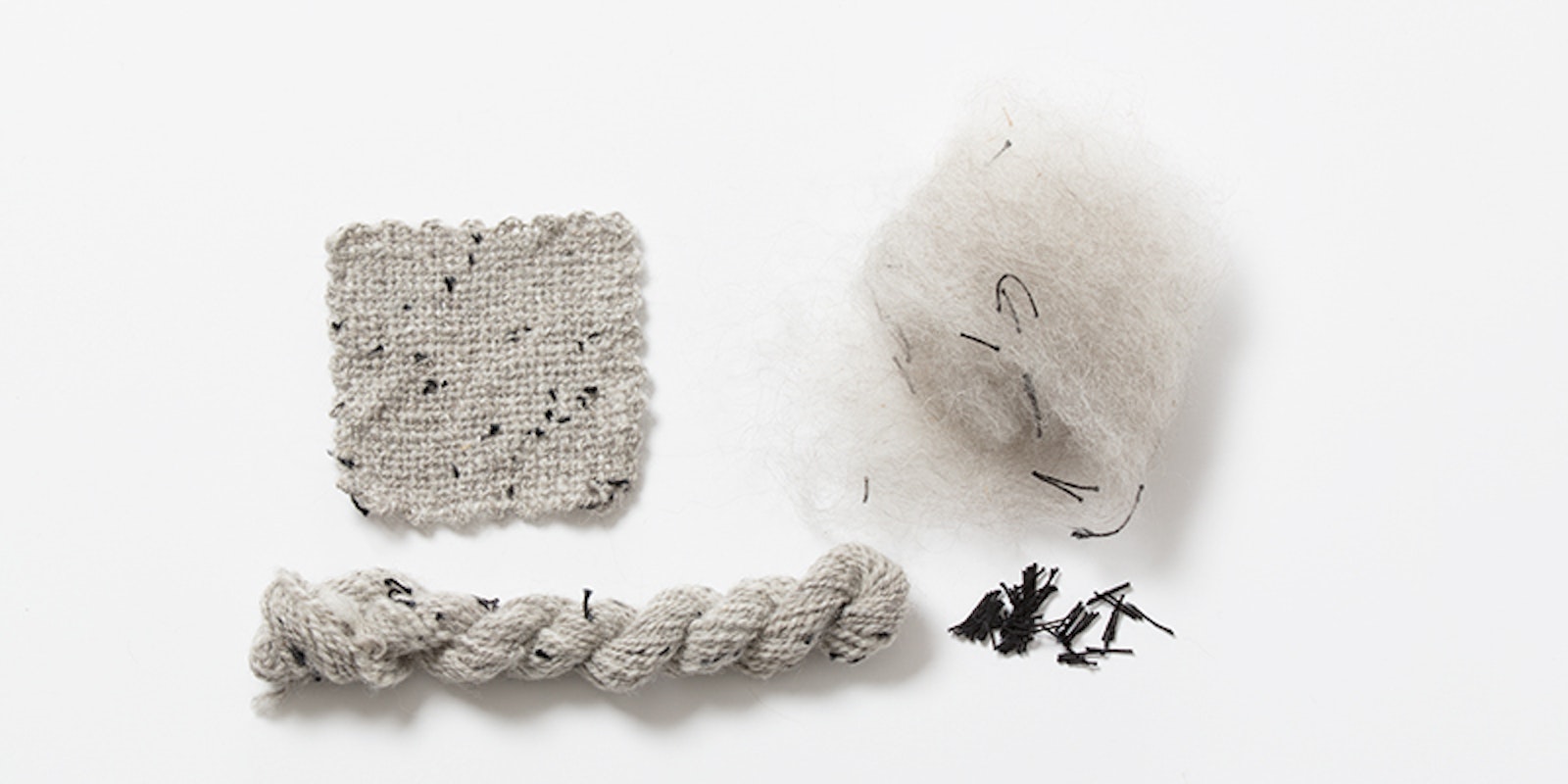Benjamin Krudwig began spinning tweed yarn with a vision: to create a yarn for a woven jacket that looked like newsprint. He chose a base blend of 75% alpaca/25% llama, then began experimenting with cotton, alpaca, and silk inclusions. As Ben explains in the Fall 2017 issue of Spin Off, a sound tweed yarn takes advantage of a woolen-spun yarn structure.
Creating tweed yarns begins in the preparation. The classic tweed yarn is woolen-spun yarn with flecks throughout. The base may be heathered or not, and the flecks may be the same color as the base yarn or different colors. You may see commercial yarn that has been dyed in such a colorway and called tweed, but true tweed yarn is defined by unspun or differently spun inclusions.
Chopped-up alpaca fiber. Photos by George Boe
Tweed yarns are spun woolen, meaning that the general direction of the fibers isn’t critical, and the drafting method allows twist to enter the drafting triangle. Woolen preparation can create the nepps that are seen in some tweed yarns because small second-cut fibers aren’t necessarily removed during the prep.
True worsted-spun yarns are spun from combed top, with fibers that are all going in the same direction. This preparation generally eliminates the short bits that become the tweedy flecks in the fiber, so combed top will not easily create tweed yarn without additional processing. You could take that braid of top and pass it through a drumcarders or handcards to create a woolen preparation, but the short fibers that become flecks are still missing.
Dyed silk noil.
The mechanics behind a woolen yarn trap more air among the fibers, creating loftier and warmer fabric when woven or knitted. Woolen yarns and fabrics are often finished by fulling, which adds strength and helps them shed water.
—Benjamin Krudwig
BENJAMIN KRUDWIG is a designer in Colorado, working primarily in “slow fashion,” where he starts from the raw material and works until he gets to the finished object. Benjamin spins, weaves, knits, crochets, and sews, which makes him a self-proclaimed fiber addict.
Featured Image: A 75% white alpaca/25% brown llama blend of fiber looks just like newsprint with chopped-up cotton thread sprinkled in.



